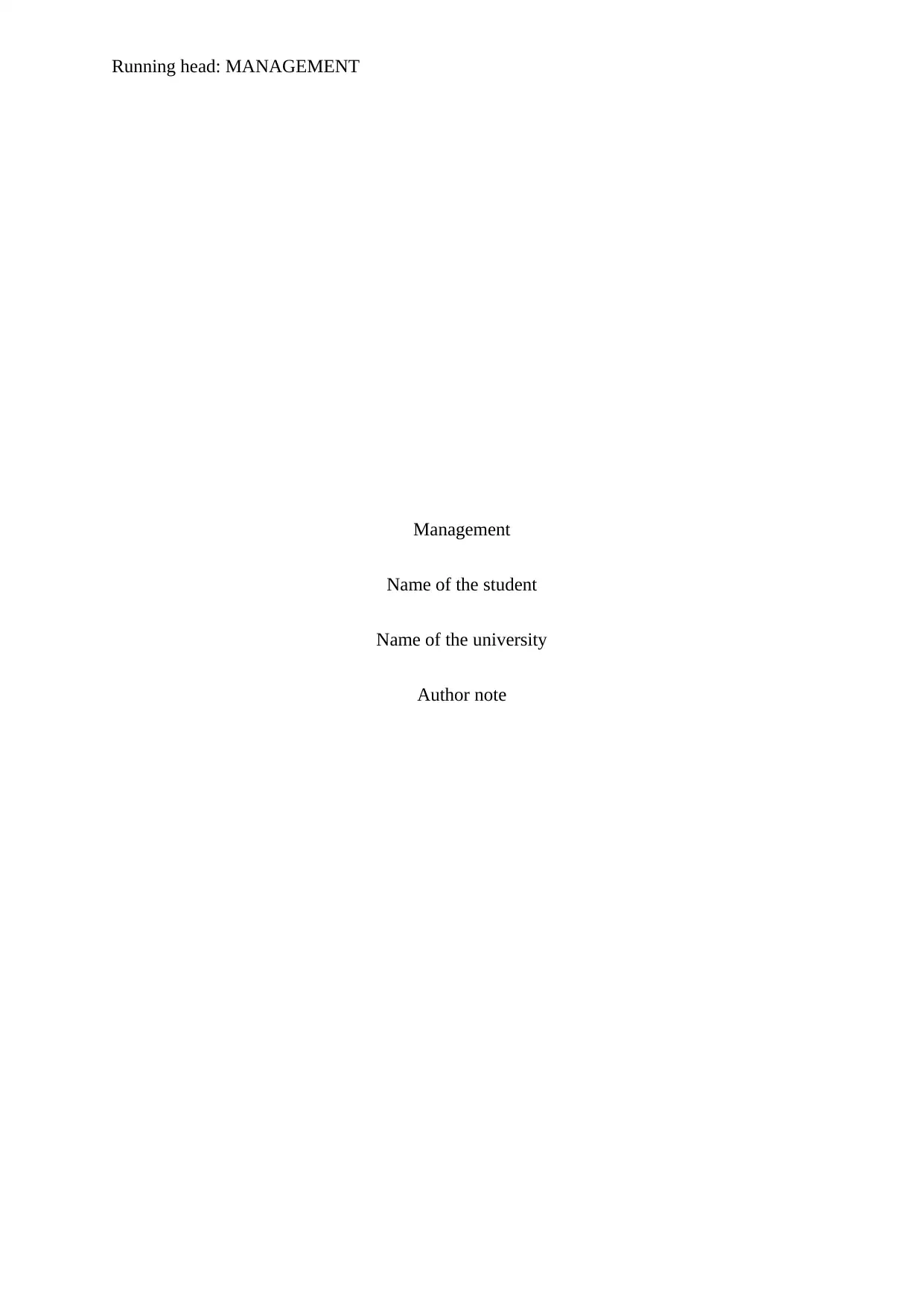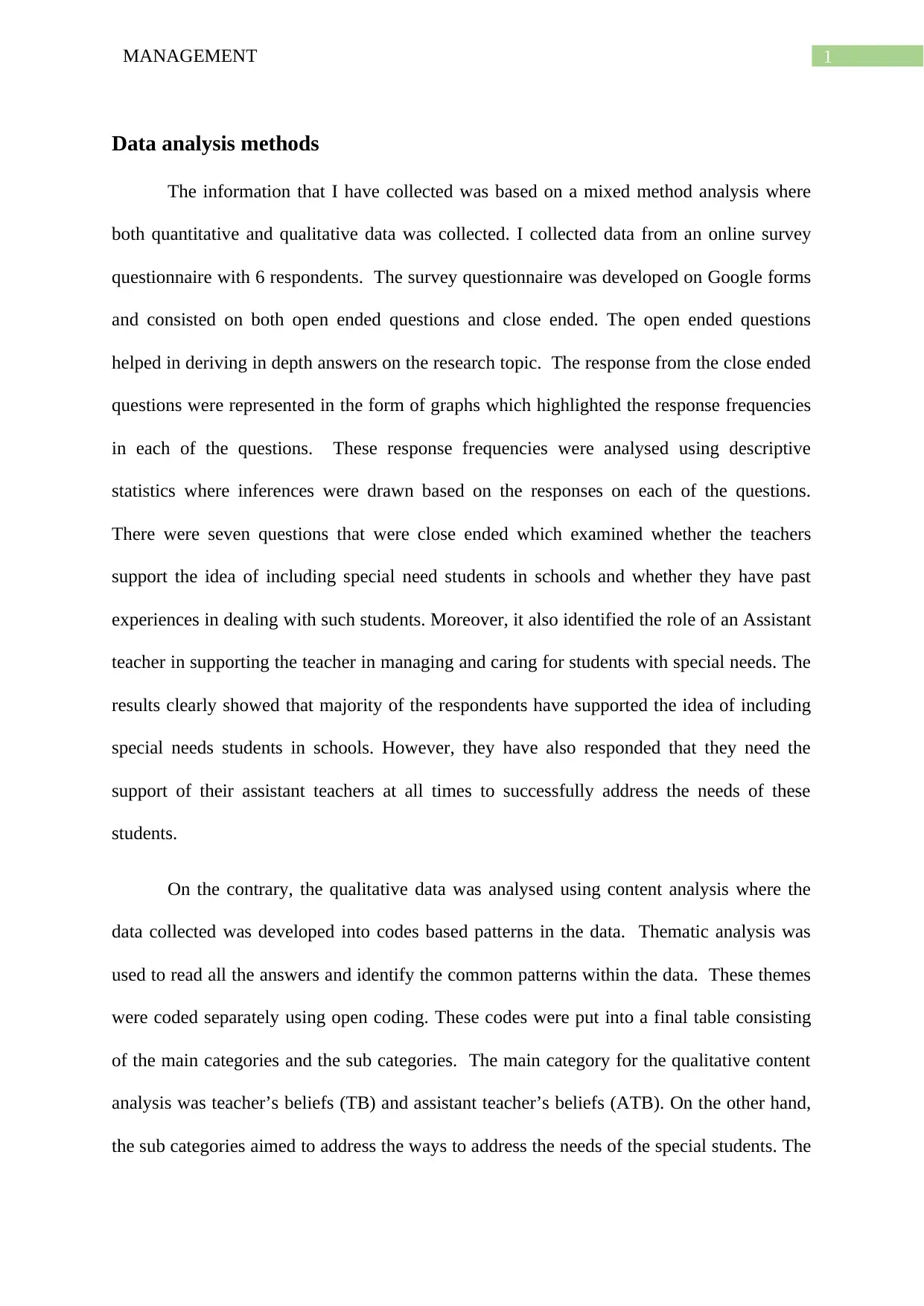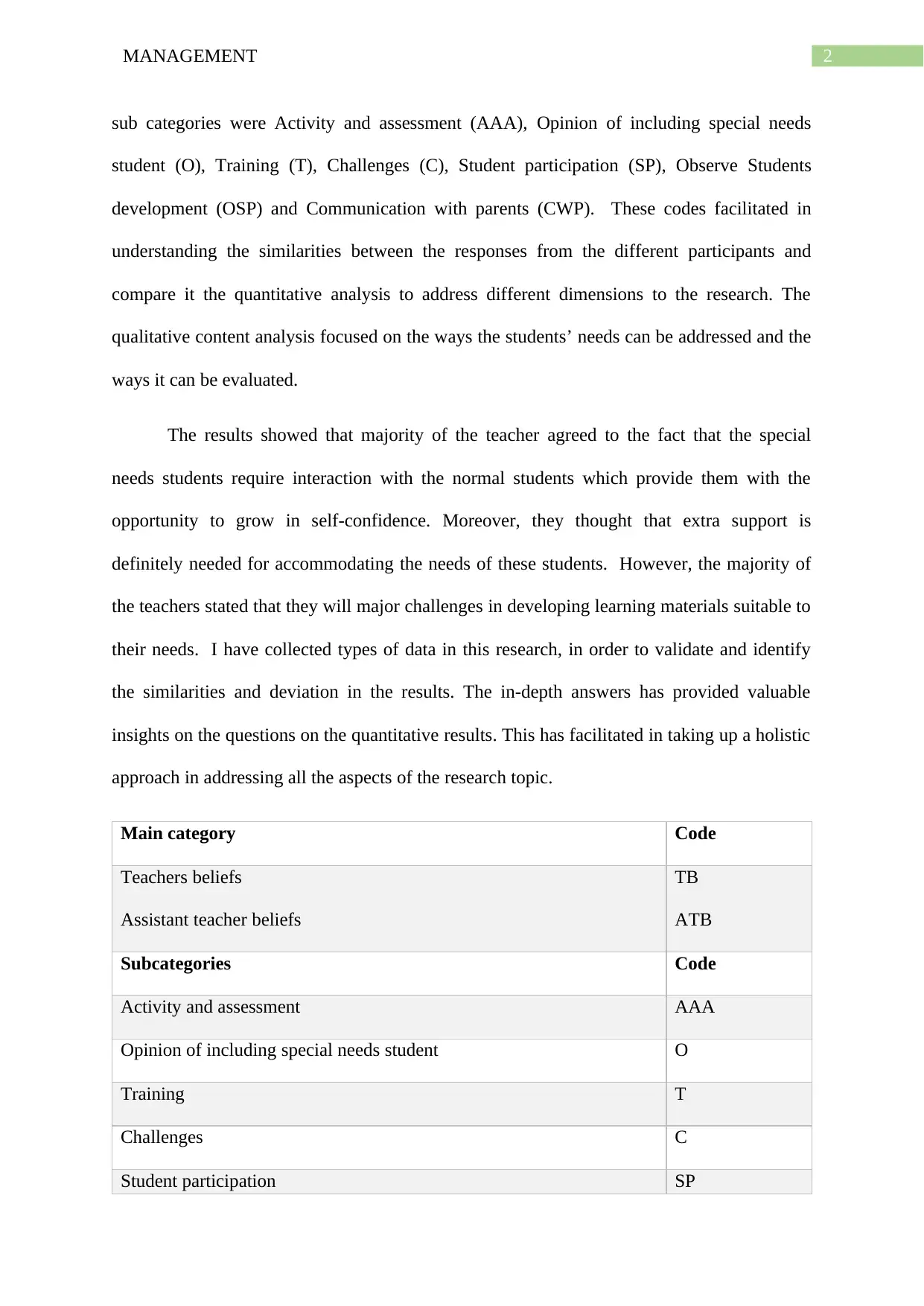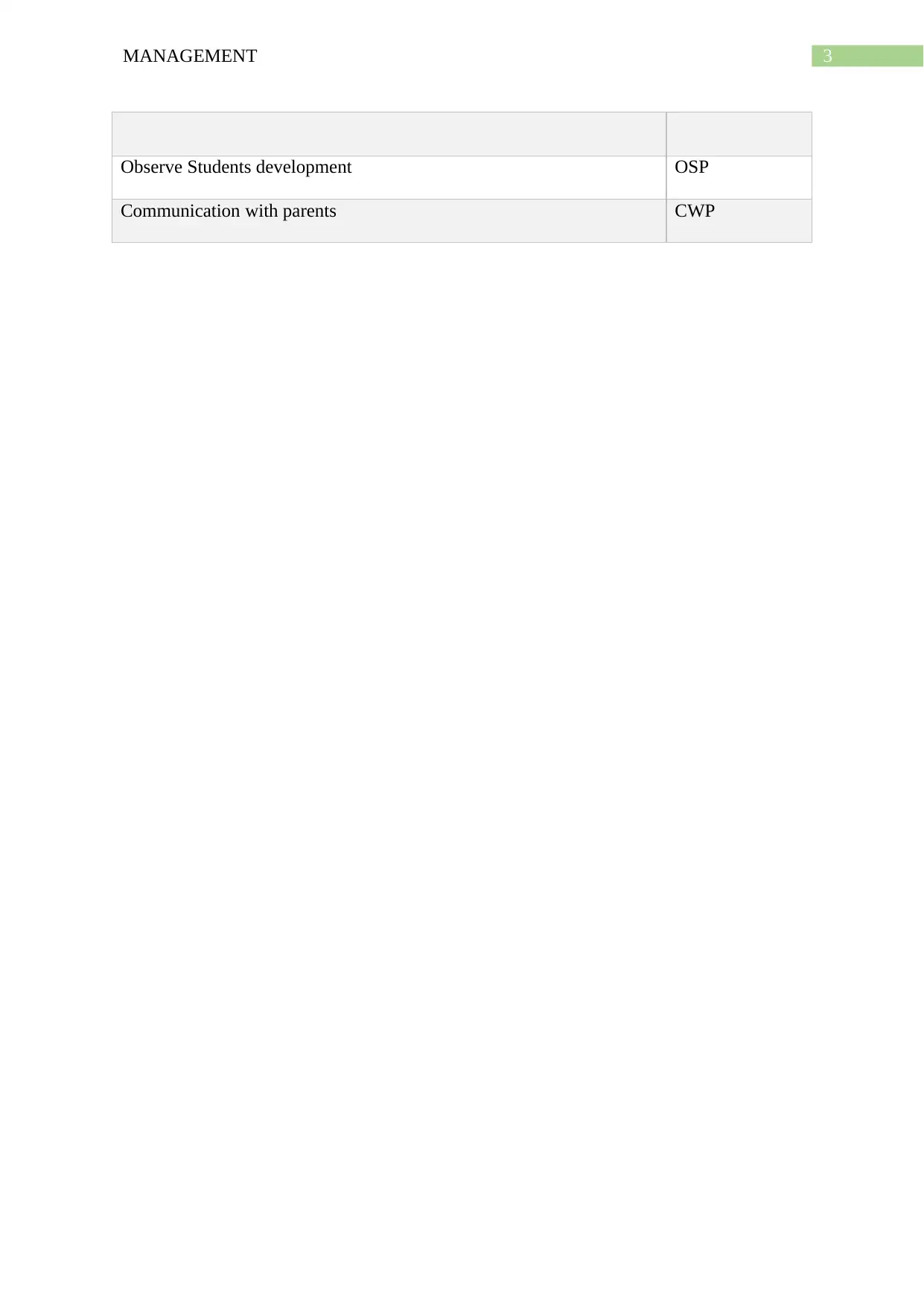University B.Ed. Action Research Project: Data Analysis Methods
VerifiedAdded on 2023/01/05
|4
|638
|72
Project
AI Summary
This document presents a comprehensive analysis of a B.Ed. Action Research project, focusing on the data analysis methods employed. The research utilizes a mixed-method approach, integrating both quantitative and qualitative data collection techniques. Quantitative data was gathered through an online survey questionnaire with open-ended and close-ended questions, and the responses were analyzed using descriptive statistics to identify response frequencies and patterns. Qualitative data, obtained through the same questionnaire, was analyzed using content analysis and thematic analysis, with codes developed to identify common themes and patterns in the responses. The study explores teachers' beliefs and assistant teachers' beliefs concerning the inclusion of special needs students in schools, examining aspects like activity and assessment, opinions on inclusion, training, challenges, student participation, student development observation, and communication with parents. The findings highlight the importance of teacher support and the need for tailored learning materials to meet the diverse needs of special needs students, illustrating the value of integrating both data types to validate and enrich the research outcomes.
1 out of 4











![[object Object]](/_next/static/media/star-bottom.7253800d.svg)